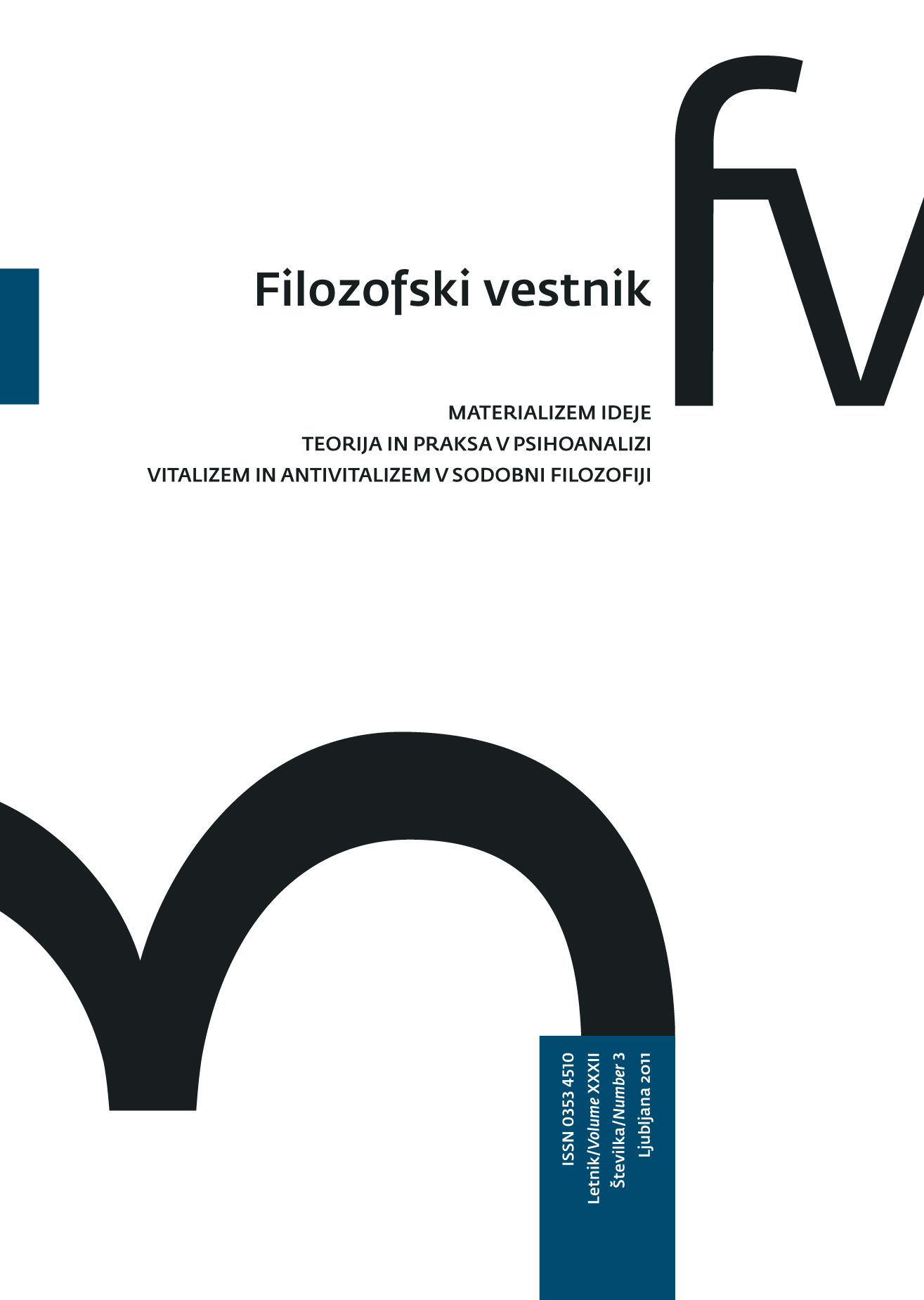Umetnost in matematika
Ključne besede:
umetnost, matematika, filozofija, Platon, Aristotel, ideja, formaPovzetek
Znano je, da sta matematična dejavnost in umetniška ustvarjalnost že od nekdaj povezani, za filozofe pa gre pri tem tudi za vprašanje zoperstavitve Platona in Aristotela. Toda skozi primerjavo njunih stališč do matematike in umetnosti pridemo tudi do dveh tendenc v sodobni filozofiji, ki se razlikujeta glede tega, kakšne so didaktične funkcije za Subjekt, za katerega se predpostavlja, da ga usmerja Ideja. Na eni je platonistična tendenca, ki meni, da je to matematika, na drugi nietzschejanska, za katero je to umetnost. Obstajata še tretja, aristotelovska tendenca, ki meni, da je matematika veja estetike, in četrta, wittgensteinovska, danes prevladujoča, ki v matematični estetiki vidi hladnost, neosebnost in ki ustreza sodobnemu humanizmu žrtve. Ob vsem tem se je treba vrniti k vprašanju izbire in forme, ki je temeljno vprašanje tako sodobne umetnosti kot tudi matematike, ter s tega vidika obravnavati navedene tendence. Primerjava štirih tendenc, med katerimi je pač treba izbrati, pri čemer sam nastopam z gledišča platonistične, pokaže, da gre za neuglašen kvartet, kljub temu pa se ob nastopu dogodka vse štiri tendence uglasijo glede tega, kaj je forma.Prenosi
Podatki o prenosih še niso na voljo.
Prenosi
Objavljeno
2016-02-06
Kako citirati
Badiou, A. (2016). Umetnost in matematika. Filozofski Vestnik, 32(3). Pridobljeno od https://ojs.zrc-sazu.si/filozofski-vestnik/article/view/4167
Številka
Rubrike
Materializem ideje
Licenca
Avtorji jamčijo, da je delo njihova avtorska stvaritev, da v njem niso kršene avtorske pravice tretjih oseb ali kake druge pravice. V primeru zahtevkov tretjih oseb se avtorji zavezujejo, da bodo varovali interese založnika ter da bodo povrnili morebitno škodo.
Podrobneje v rubriki: Prispevki





